By Virginia M. Wright
Photographs by Nicole Wolf
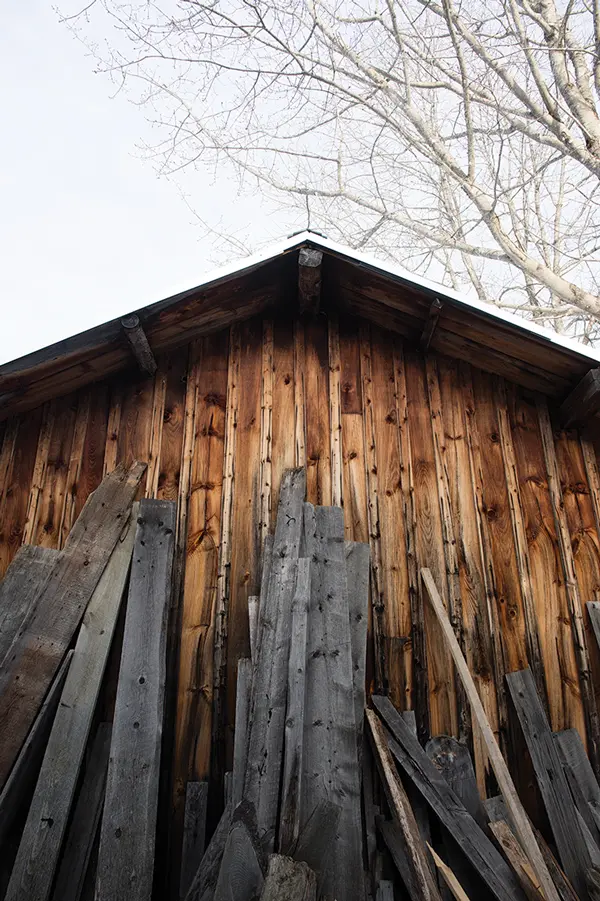
“This is your inheritance,” cabinetmaker Roy Slamm sometimes teased his daughters when they visited his woodworking shop, near their childhood home in South Solon. “I hope you like it, because this is it. There are no gold and jewels.” Roy died eight years ago, at age 71, and his daughter Mimosa Mack confirms, “We got wood. We got a lot of wood.”
Mack and her sister, Amanda Slamm, spent the months after their father’s death teaching themselves to make cutting boards and pizza peels, and before long, they were selling them online and in local craft shops as Sprig Woodwork. “We enjoyed doing it because this was his place,” Mack said on a recent visit, sitting with Slamm in the shop, their chairs pulled up to a workbench scattered with satiny wooden spoons, spatulas, spreaders, and toaster tongs. “It was our way to be close to him.”
Though they were novices, the sisters were comfortable around table saws, jigsaws, and other tools, having grown up watching their dad. A bit of a perfectionist, he’d let them help with sanding — and sanding and sanding. “It’s hard for us not to do it to the nth degree now,” Slamm says. “It’s got to be smoooooth.”
Sprig Woodwork’s cooking tools begin as rough-hewn blanks and end up as elegantly carved utensils.
They were about a year into their business, a part-time occupation for both, when one of their father’s woodworking friends arrived unannounced and plunked a bucket of tools on their table saw. “I’m going to teach you how to carve spoons,” he said. He showed them how to gouge out the bowl, rasp the back, and feel the edges for evenness. “We had this batch of pizza peels we had to finish,” Mack recalls, “but we just couldn’t wait to carve spoons.”
Making spoons, whether big or small, straight or curved, has proven especially satisfying. “We work on the other stuff together — she’ll be cutting tongs on the bandsaw and I’ll be smoothing them on the sander — but the spoons are one-offs, either hers or mine,” Slamm says. “They’re almost like sculptures.”[separator type=”thick”]
 Tell us More Amanda Slamm & Mimosa Mack
Tell us More Amanda Slamm & Mimosa Mack
I have a drawer filled with spoons and spatulas, but I only ever reach for yours.
AS: With design and things that sit in the hand, you often don’t notice what works. If you’re using scissors and they give you a blister, you notice, but if the scissors work like an extension of your hand, you don’t even think about them. It’s nice to be working on these things, because I’ve become conscious of what sits in my hand nicely.
MM: We like taking no-nonsense things you use every day and making them a little bit nicer, giving them that feels-good feeling.
What types of wood do you use?
AS: Mostly native hardwoods — ash, maple, black walnut, and a lot of cherry because it smooths easily and smells good when we work with it. We sand them and wet them to raise the grain — the little hairs stand up. We wait for them to dry, sand them and wet them again. We do that three times.
MM: We use some exotic woods in the joints of the tongs and chopsticks — leopard wood, lacewood, Osage orange. These are about color combinations we enjoy.
How would your dad feel about what you’re doing?
MM: Oh, he’s smiling. Then [wagging her finger and laughing], “Unh-uh-uh, you’re doing it wrong.” Some funny things have happened. We found a rolling cart that didn’t have a top. We came back here and found this glued-up piece of wood that was exactly the right size. We use that cart all the time, and we always say, “Thanks, Dad, for making that. Thanks for thinking of us.”




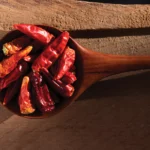
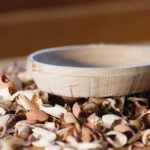
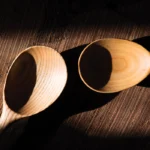
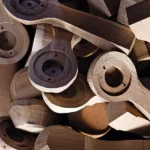
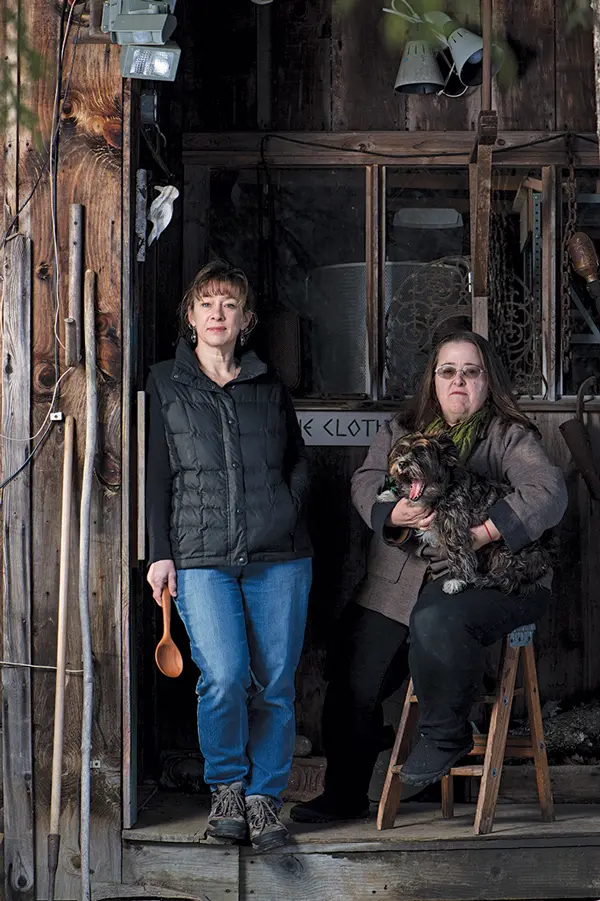 Tell us More Amanda Slamm & Mimosa Mack
Tell us More Amanda Slamm & Mimosa Mack